
What It Is & How to Use It in 2023
- October 15, 2023
- Knowledge Base
- 0 Comments

Recently, I set an iPhone time limit on my social media use to “45 minutes.”

I figured 45 minutes would be more than enough. Almost an hour? Between working at HubSpot, catching up with friends, and attending exercise classes, 45 minutes would be plenty of social media consumption.
Unfortunately, I learned quickly that I spend 45 minutes on social media before I even get to work in the morning.
I know I’m not alone. The average daily social media use of internet users worldwide amounts to 151 minutes per day.
With all that consumption, more businesses turn to social media to market to their audiences. But marketing is just one aspect of the buyer’s journey — what about sales? Can that be done within social media platforms, as well?
It’s now entirely possible for businesses to sell products and services natively within social media sites.
Here, we will explore that concept — social commerce — and look at some impressive examples of social commerce so you can consider trying it for your own company.
Additionally, we’ll list some of the most popular social commerce platforms available today so you can decide which one could give you the highest ROI.
Top social commerce websites/platforms
How to Create a Social Commerce Strategy
What is social commerce?
Social commerce is the ability to purchase a product or service natively from within a social media platform like Facebook, Pinterest, Instagram, or Twitter.
Since many businesses are already marketing on these social media sites, allowing users to purchase from within these platforms without leaving the site makes sense.
Should you leverage social commerce?
If you sell physical products online, leveraging social commerce is a great way to drive sales and revenue to your business.
Users are used to the native purchasing experience at this point and prefer to be able to make a purchase right on the social media app quickly.
Our latest consumer trends survey shows social media is the future of shopping. Gen Z, Millennials, and Gen X all prefer social media for product discovery, and 87% of sellers say social selling has been effective for their business in 2023.
Moreover, 59% say their company is making more sales through social media this year than last year.
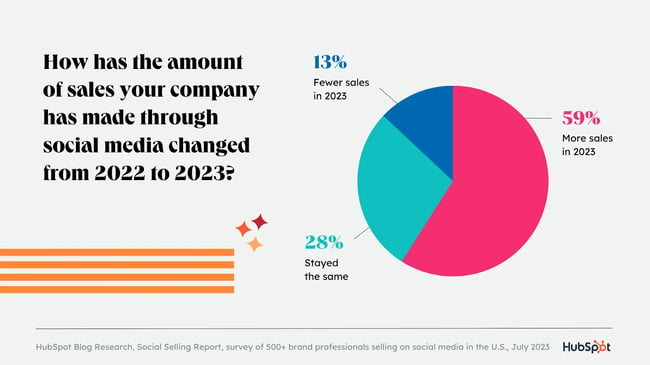
Social commerce examples
- Social media checkout capabilities
- Social commerce plugins and apps
- Shoppable ads
1. Social media checkout capabilities.
One of the best examples of social commerce is the ability to click on a product and checkout from a social media site, like Instagram or Facebook.
For instance, Instagram has a “checkout” feature on their app, which allows you to click on a product within a post, choose a size and color, and proceed to payment within the platform.
The first time you use Instagram‘s checkout feature, you must enter your name, email, billing information, and shipping address. Once your order is complete, Instagram saves your data, so you don’t need to enter it the next time you shop.
You’ll also receive notifications about shipping and delivery from within Instagram, so you can track your purchase without leaving the app.
For instance, let’s take a look at what happens when I click the View Shop or shopping icon on one of @NikeWomen’s Instagram posts:
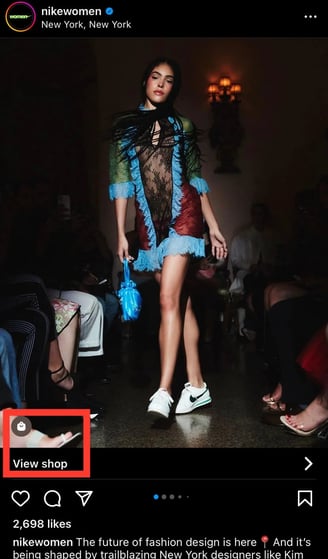
Instagram immediately pulls up a page with all the details of every product included in the image and more from its shop.
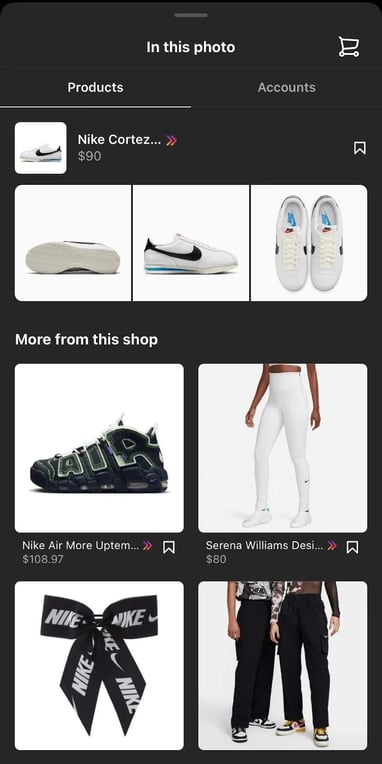
I‘m particularly interested in the sneakers. From within Instagram, I can choose a color and size and then click the blue “Checkout on Instagram” button. I don’t need to re-enter my information if I’ve shopped on Instagram in the past.
Pretty simple.
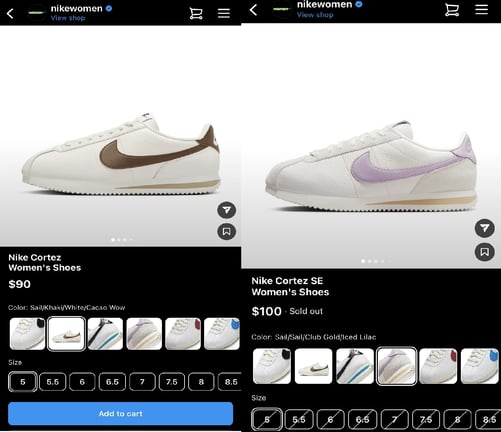
Many other social networks have these checkout features, including Facebook and Pinterest.
2. Social commerce plugins and apps.
As social commerce continues to rise in popularity, we’ll see more plugins and third-party apps emerge to make the process even more seamless for businesses and users.
For instance, one third-party app called Soldsie allows your followers to purchase one of your products by simply typing “Sold” into the comments section of a post.
Once they’ve commented “Sold,” the app takes care of the rest, emailing the user an invoice to complete.
For instance, if my friend comments “Sold” on a Facebook post of a cute sundress, I’ll see the picture in my News Feed and might consider purchasing one for myself.
Ultimately, social commerce is an excellent opportunity to increase brand awareness and sales- a win-win.
3. Shoppable ads.
Shoppable ads are another example of social commerce and are currently available on both Instagram and Snapchat.
Simply put, shoppable ads allow businesses to tag products in an Instagram or Snapchat sponsored post, ideally creating a more efficient ad-to-purchase experience.
This type of social commerce helps companies collect valuable data on which ads convert prospects into customers immediately.
The features of shoppable ads within both Snapchat and Instagram continue to improve.
For instance, Snapchat has advanced features on its shoppable ads, including collection ads, product catalogs, advanced pixel targeting, and 30+ new Snapchat partners.
Wish, an e-commerce app, successfully uses Snapchat’s product catalog feature to create different Snap Ads and Story ads to showcase a large variety of their products, as shown below.
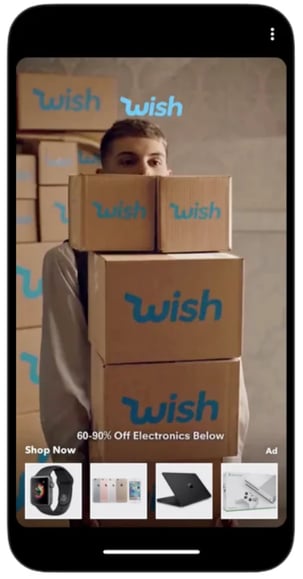
![Download Now: The 2023 State of Social Media Trends [Free Report]](https://no-cache.hubspot.com/cta/default/53/3dc1dfd9-2cb4-4498-8c57-19dbb5671820.png)



